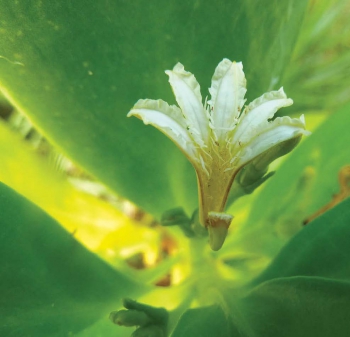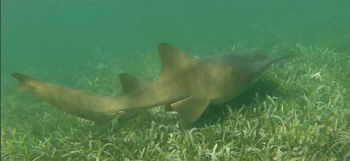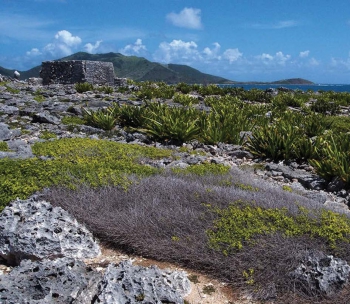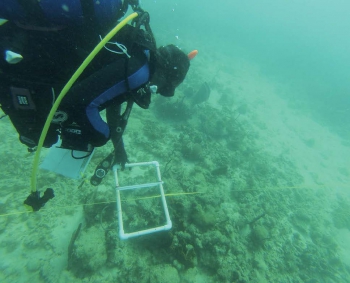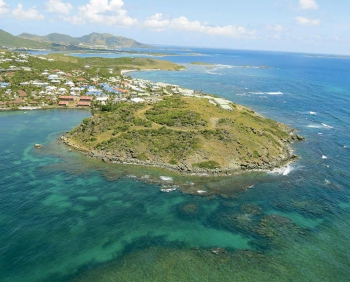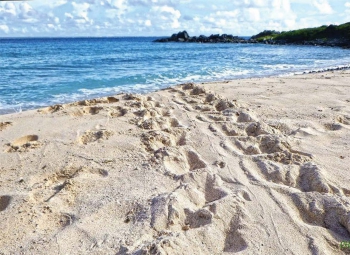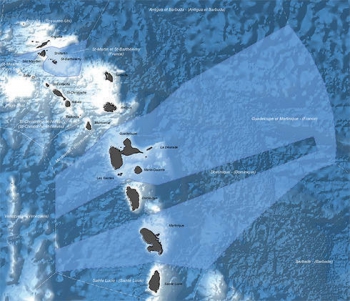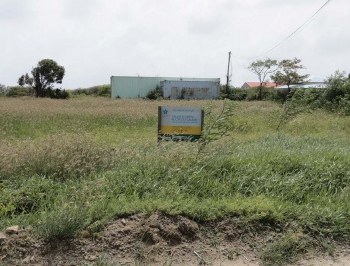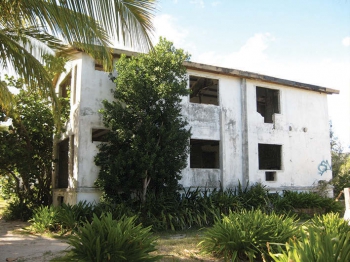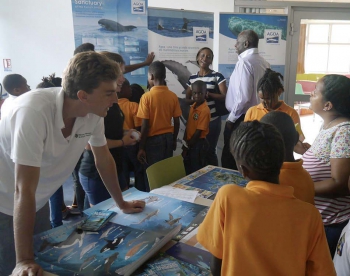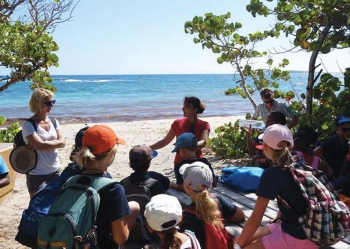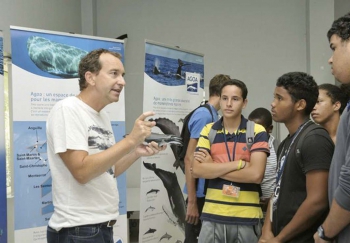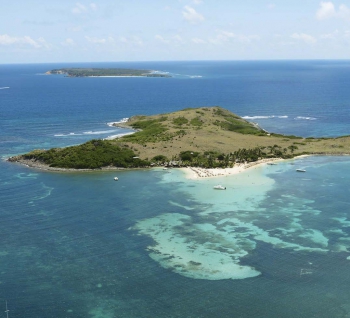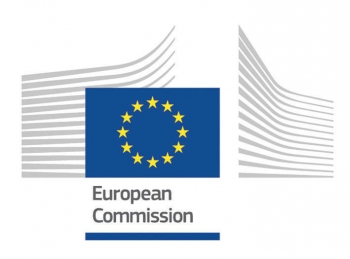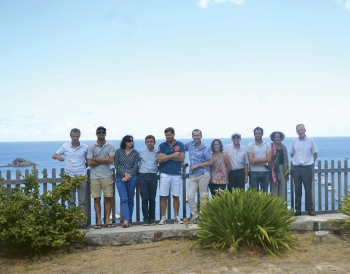- page 3 : L’amélioration des connaissances sur les espaces et les espèces protégées
- page 7 : La maîtrise des impacts anthropiques sur les espaces protégés
- page 12 : Actions de police
- page 17: La restauration des milieux et des populations dégradés
- page 18: La communication et l’éducation environnementale
- page 24 : L’optimisation des moyens pour assurer la qualité des missions
- page 26 : Le renforcement de l’intégration régionale
Newsletter-26
Newsletter-26
Better Knowledge About Protected Areas And Protected Species
The Réserve Naturelle hosted Karl Questel,
A ranger at the Territorial Environmental Agency of Saint Barth, on May 16-29. Renowned for his deep knowledge of tropical flora and fauna, Questel lent a hand to Caroline Fleury in her creation of an inventory of the terrestrial flora and fauna the within the Réserve Naturelle de Saint-Martin. During this two-week project, Fleury and Questel identified every species they encountered, whether native, endemic, introduced, or invasive. Each species now has its own information sheet, which comprises its vernacular (common) name, its scientific name (in Latin), its photo, and description. On the Sentier des Froussards, for example, between Anse Marcel and Cul-de-Sac, 211 floral species and 103 animal species share the landscape, including a large number of insects. Endemic species - present naturally on the island - were given special attention, with an eye toward their preservation, as were invasive species, in terms of controlling them, if not eradicating them entirely. For example, one scaevola taccada flowering shrub was found at Pinel and might be uprooted. Called “sea manioc” in La Réunion, this plant comes from the Indo-Pacific region and tends to invade the coasts of Caribbean islands and Florida, where is supplants its endemic cousin, scaevola plumieri. Fleury and Questel spent one night on Tintamare, in order to identify nocturnal species: starting with insects - butterflies, grasshoppers, ants - as well as other species, such as crabs and birds. The Réserve Naturelle covered Karl Questel’s stay in Saint Martin, as part of a partnership program between the two islands.
Nicolas Boudin, a 20 year-old scientific student in the «Sea and Littoral Technician Program” at the University of the Littoral Opal Coast in Calais, is researching why nurse sharks gather in large numbers every summer,
especially near Galion, as well as Green Cay, or White Bay at Tintamare. These mysterious aggregations take place from mid-July through the month of September, and the placement of underwater cameras will certainly allow for increased knowledge about this species. Keeping in mind that man is the primary predator of nurse sharks - and bullhead sharks - that feed on small fish, squid, and crustaceans. As an intern from May 30 through September 28, 2016, Nicolas first set up a follow-up protocol, an indispensable step before working in the field. He is working with the French West Indies Shark Network, coordinated and run by the association, Kap Natirel.
What is the heritage of Saint Martin in terms of historic buildings?
We will soon have a better idea, as soon as the Collectivité makes its inventory on the subject available to the public. Caroline Fleury, working in the scientific sector at the Réserve since February 2015, toured two sites, on Tintamare and Green Cay, with Élisabeth Dandel, an art historian, and Michèle Robin-Clerc, a leading planner and architect, along with Christophe Hénocq, director of pedagogical activities and heritage for the Territorial Archives, and co-coordinator of this project with Stéphanie Dargaud, director of the same service. The two specialists took numerous photos, made sketches, and took the measurements of these two structures, witnesses to the historic past of Saint Martin.
Managing The Impact Of Human Activities In Protected Areas
The monitoring and improvement of the condition of their coral reefs is an environmental priority for a growing number of Caribbean islands
Interested in standardizing the techniques they employ in order to perfect these natural resources. 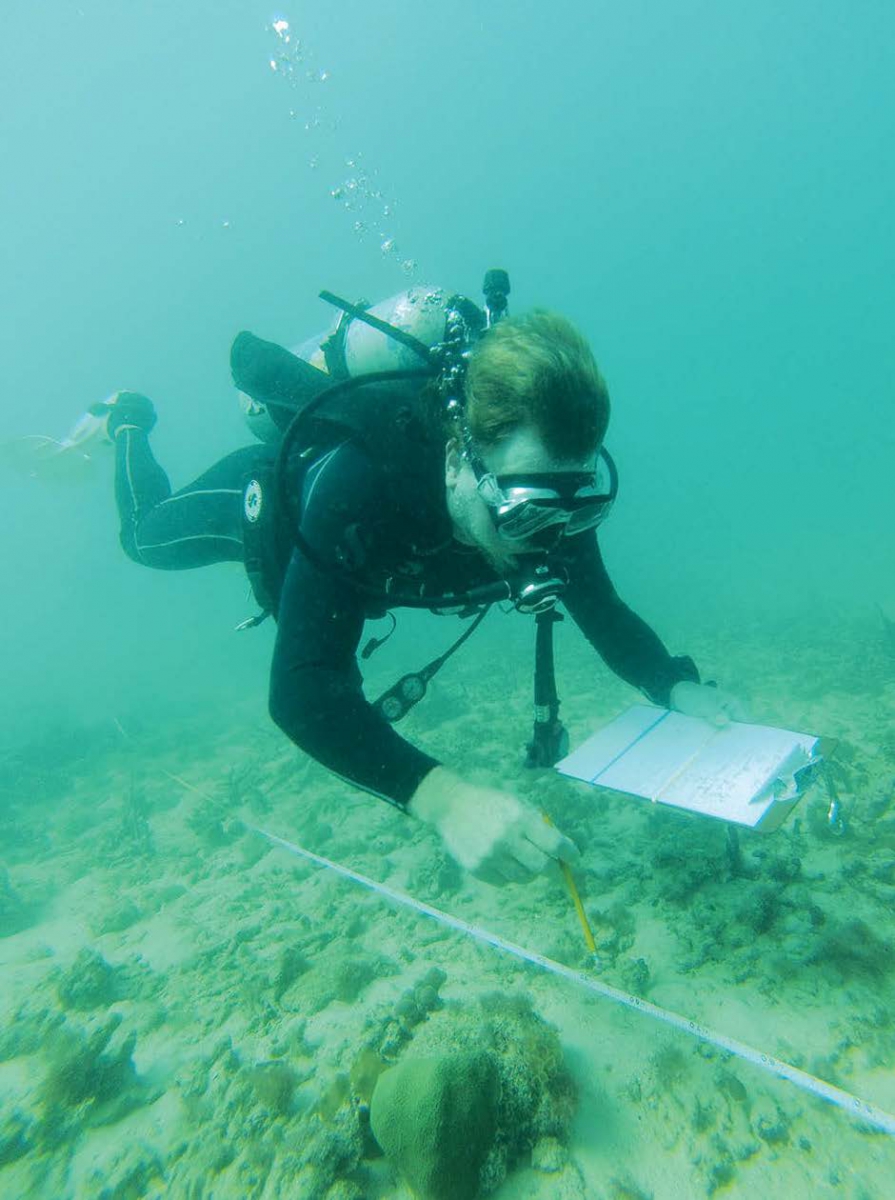 That is one of the reasons that the Global Coral Reef Monitoring Network (GCRMN) organized a technical atelier in Discovery Bay, Jamaica, April 17-26, 2016. Julien Chalifour, director of the scientific sector of the Réserve Naturelle de Saint-Martin, attended and met with scientists from the USA, Cuba, Venezuela, and Barbados, as well as Saba, Statia, Sint Maarten, and Saint Barth. They presented their monitoring techniques and pooled their common experiences and knowledge in the spirit of sharing. As a result, several presentations increased awareness of the actions outlined in the highly compatible protocol that has been in effect in Saint Martin since 2008. One of these activities, better estimating the transparency of the water thanks to a Secchi disk, has already been taken into consideration. The SPAW-RAC, co-organizer of the event, financed the trip for Julien Chalifour and Sébastien Gréaux, his counterpart at the Territorial Environmental Agency of Saint Barthélemy. This harmonization of methods, and the data produced, will contribute to improvement in the exchanges between the participants, as well as enhancing the global vision and overall condition of the coral reefs in the Caribbean, with an eye toward sustainable regional management.
That is one of the reasons that the Global Coral Reef Monitoring Network (GCRMN) organized a technical atelier in Discovery Bay, Jamaica, April 17-26, 2016. Julien Chalifour, director of the scientific sector of the Réserve Naturelle de Saint-Martin, attended and met with scientists from the USA, Cuba, Venezuela, and Barbados, as well as Saba, Statia, Sint Maarten, and Saint Barth. They presented their monitoring techniques and pooled their common experiences and knowledge in the spirit of sharing. As a result, several presentations increased awareness of the actions outlined in the highly compatible protocol that has been in effect in Saint Martin since 2008. One of these activities, better estimating the transparency of the water thanks to a Secchi disk, has already been taken into consideration. The SPAW-RAC, co-organizer of the event, financed the trip for Julien Chalifour and Sébastien Gréaux, his counterpart at the Territorial Environmental Agency of Saint Barthélemy. This harmonization of methods, and the data produced, will contribute to improvement in the exchanges between the participants, as well as enhancing the global vision and overall condition of the coral reefs in the Caribbean, with an eye toward sustainable regional management.
As planned, the Conservatoire du Littoral consulted the local population at the site of Babit Point, at Oyster Pond
In order to decide with them on the best actions to take so that this magnificent nature site remain undeveloped but open to hikers. It was decided to create a small welcome area with informational signage and the planting of local species such as gaïac trees and Turk’s head cactus. Markers would be installed along the path to avoid having people trample the vegetation. The path will also feature botanic labels and two outlook points with the names of neighboring islands that can be seen. Members of the “Association syndicale libre d’Oyster Pond” (ASLOP) have requested that a totem pole be erected in a good spot, to add an artistic dimension to this poetic site.
The protection of sea turtles is an activity that mobilizes local volunteers,
And this year 25 eco-volunteers participated in the second annual evening organized by the Réserve Naturelle in May. Julien Chalifour spoke about the different species of turtles that come to lay their eggs on the island’s beaches, their life cycle, and the activities instituted by the Réserve to protect them and favor their reproduction. Eco-volunteers help with this protection and regularly walk the beaches assigned to them to note the tracks left by turtles that have dug a nest to bury their eggs. It is not too late to participate! Contact the Réserve at science@rnsm.org or via the Facebook page.
The third council for the management of the Agoa Sanctuary for the protection of marine mammals was held in Guadeloupe on April 27 & 28, 2016,
Presided over by Yvon Combes. Saint Martin was represented by Ramona Connor, vice president of the territorial council, Kate Richardson, director of the Tourist Office, Bulent Gulay, president of the association Métimer, Nicolas Maslach, manager of the reserve of Saint-Martin and Romain Renoux, correspondent for Agoa in Saint Martin. The council elected Maurice Bonté as vice president of the sanctuary, who attends in his capacity as president of the mayors’ association of Martinique. The assembly studied, among other topics, the consequences of the CASEIS seismic campaign on marine mammals. The goal of this campaign is to find the traces of large earthquakes in the Antilles archipelago, in order to better understand seismic cycles in the region. In 2015, the Agoa office was asked to provide its assessment on various projects (seismic research, enlarging port zones, oceanographic campaign) that have a potential impact on cetaceans, in order to eliminate or reduce this impact as much as possible. Created during the first management council in Martinique, the international cooperation committee has defined a strategy for cooperation throughout the Caribbean and beyond: the idea is to extend the protection of marine mammals along their migratory routes, which sometimes extend for thousands of miles from the North Atlantic to tropical waters. Additional information: www.sanctuaire-agoa.fr
Police Activity
Since January 1, 2016, the agents of the Réserve Naturelle have effectuated 76 patrols at sea and 166 on land, 86 of which were on property belonging to the Conservatoire du Littoral. These patrols led to 13 criminal proceedings, eight of which will be taken to court.
Going to the dogs
«Dogman,» illegally occupying part of lot AW 39, at Galion,
Ran a dog-training business incompatible with the regulations of the Réserve, and decided to leave the site after being fined. The public prosecutor considers the case closed. The occupant destroyed the small structure he had built, and the Réserve Naturelle, and its agents, cleaned the site at its own cost. They will install a fence in order to allow the vegetation to grow back.
No fishing in the Réserve
On March 24, 2016, a fisherman who came out of the water with his harpoon gun onto the beach of Grandes Cayes was quickly reminded of the law. And was told that he will be fined in the case of a
Camping at Easter, yes, but...
Si la Réserve naturelle autorise les campeurs à venir planter leurs tentes le long des plages pendant les fêtes pascales,
If the Réserve Naturelle authorizes campers to pitch their tents along the beaches during Easter vacation, it is expected that people will respect the environment, as well as local laws, but that is not always the case. As happened on March 29, 2016, on the beach of Grandes Cayes, when agents of the Réserve reported a group of campers who had moved the rocks that prohibit the passage of vehicles, cleared away the vegetation at their campsite, and built a fire.
No sea scooters, no Seadoo
A company from Saint Barth that organizes day excursions to Pinel was prohibited from the Réserve Naturelle for one month.
On June 12, 2016, in spite of several warnings, this company continued to use small Seadoo scooters, which are not allowed within the boundaries of the Réserve Naturelle, as is also the case within the waters of the Réserve Marine of Saint Barthélemy. Illegal usage of such motorized vehicles designed for underwater use is subject to a fine of 68 euros.
Better to follow the rules
On June 21, 2016, the «Ranch du Galion» was in trouble for illegal activities.
This business, which occupies land being part of the Réserve Naturelle without authorization, had cleared the land to build an enclosure for their horses, and organized paid horseback riding excursions without having the proper diploma to do so, and without requesting official permission. This type of activity is compatible with the objectives of the Réserve Naturelle and can be authorized, on the condition that the owner follows all rules set by governmental agencies, and meets with the Réserve to work out the practical considerations before starting such a business.
Le
Galion shelter finds itself in court
The case concerning the Galion animal shelter came before the court on June 27.
The trouble started in September 2014, when the lead agent of the Réserve informed the president of the association, Pawsitive, that the shelter she was running is located on land classified as a nature reserve. The shelter, which at that time housed seven adult dogs and four puppies, was asked to move from the premises. In October of the same year, the Réserve sent a formal notice prohibiting the shelter from doing work on the site, and in November, a second notice was sent, this time requesting that work in progress be stopped, and by that time there was a total of 24 dogs. On December 15, 2014, the veterinary service attempted a control, but since the president of Pawsitive was opposed, she was informed there would be legal consequences. Called before the judge to clarify the situation, the director of the Réserve Naturelle attested that the land in question was classified as a nature reserve, and that the role of the Réserve in this case was to have the law respected. «Ms. Morel’s activity is commendable and legitimate, but she is opposed to the regulations. The management of stray dogs is the responsibility of the Collectivité, not the Réserve Naturelle.» The public prosecutor referred to the decree that created the Réserve Naturelle, issued by the Prime Minister at the time, which clearly specified that lot AW39 is part of the Réserve Naturelle. «The violation is clear and the considerations are unrealistic. When Mme Morel set up the shelter, she was told to stop, and in spite of official notices, she continued in violation of the law.» A dialogue with the veterinary service was ignored, and once again the shelter was warned: «it cannot continue in Galion on land classified as Réserve Naturelle.» The prosecutor has requested a fine of 750€, and that the site be returned to its original condition within a period of six months. The president of Paw Sitive was sentenced to two months in prison with a suspended sentence, a 500 euro fine, and required to demolish the refuge within the next six months.
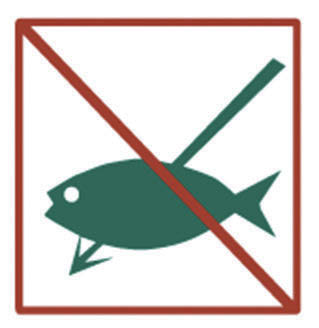
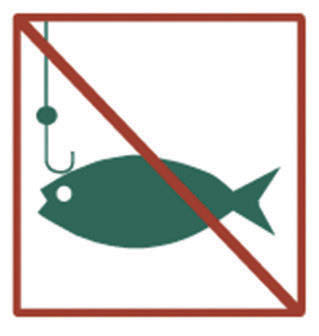
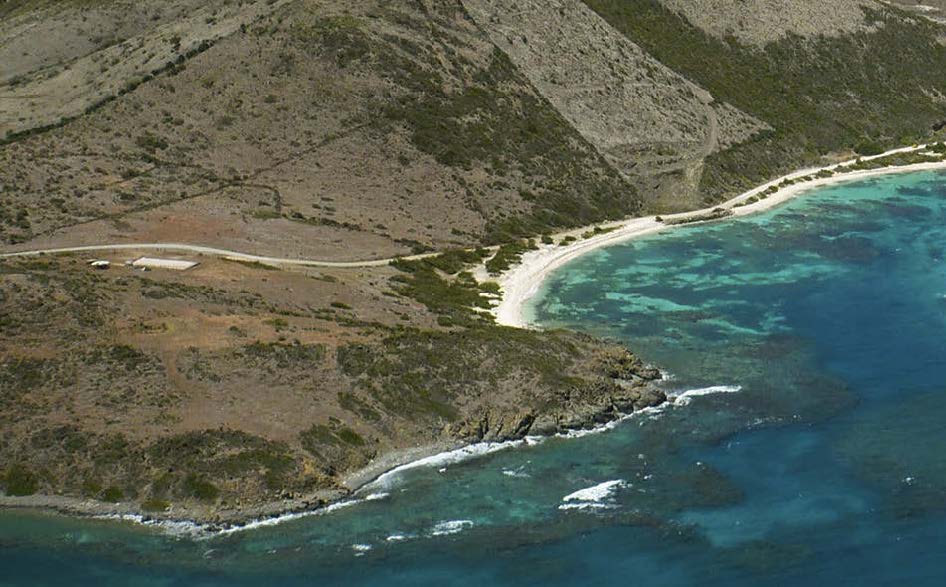

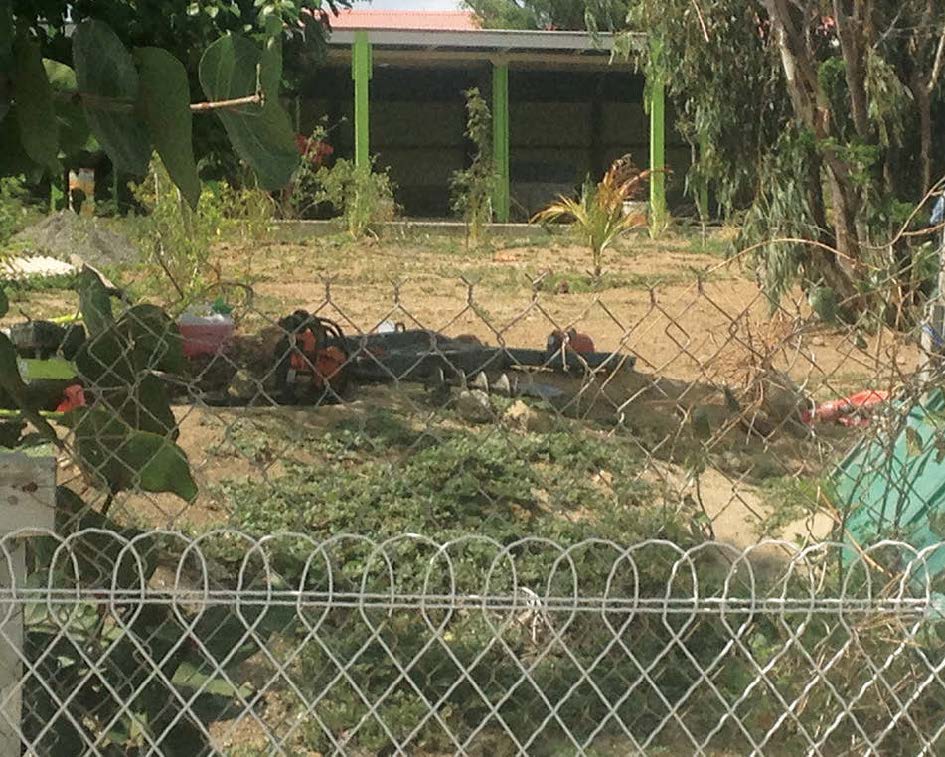
Restoration Of Degraded Areas And Populations
The dismantling of the ruins of the old hotel at Galion is complete.
The demolition of various building began on September 5 and was completed by the end of the month. Initial restoration of this magnificent site is planned by the Conservatoire du Littoral, which plans to consult the population before deciding on the details for the ultimate project here. A first meeting was held with the French Quarter council, and it was decided to set up a small think tank. At the same time, in consultation with the school board, a project has been set up with two French Quarter classes, where the students will participate and make their own suggestions for projects. Julie Walker, representative of the Conservatoire in Saint Martin, met with the two teachers to prepare the project for the students in September 2016. The classes, one in elementary school, the other in middle school, will work on the project in the first months of the school year. The students will learn about the various species that exist on the site, deepen their understanding of the ecosystem, and think about what they would like to see there: the planting of vegetation, for sure, as well as a parking lot for vehicles, and maybe informational signage for the public at large.
Environmental Communication And Education
Sustainable development. A vast subject, and the focus of a special weeklong event held on May 31-June 4, 2016.
Organized by the Collectivité at the médiathèque for the benefit of students, the idea was to have each child serve as an ambassador for sustainable development in his or her own family. The Réserve Naturelle participated, with a stand on May 31 and June 1. Ashley Daniel, Caroline Fleury, Franck Roncuzzi, and Julien Chalifour did their best to teach this young public - very attentive and curious - about the challenges of sustainable development and the protection of our biodiversity. They dedicated a series of 30-minute sessions to meet with several classes from kindergarten through eighth grade.
On Friday, April 8, at the request of their teachers, two elementary school classes from the school in Cul-de-Sac invited Amandine Vaslet, Caroline Fleury, and Julie Walker,
To teach them more about their natural environment. Amandine Vaslet, from the program, «My School, My Whale,» taught this young audience about the importance of protecting marine mammals, sharing pedagogical materials created by her association. Julie Walker, presented the Conservatoire du Littoral in Saint Martin, spoke about the Conservatoire to the two classes and explained the importance of wetlands, before taking them on a field trip to the Etang de la Barrière. This school trip continued to the beach at Grandes Cayes, where the three professionals answered questions from the students, and spoke about various means of protecting sea turtles.
La Réserve Naturelle and the Agoa Sanctuary for the protection of marine mammals played an active role at the “Metiers de la Mer” Forum, organized by the CCISM on March 17, 2016.
Their goal was a public awareness campaign, directed particularly at students, as well as professionals in related fields, to emphasize the importance of protecting our marine mammals, and the actions taken with that in mind. Romain Renoux, the Agoa Sanctuary representative in Saint Martin, answered questions from high school students in the morning, and in the evening ran a conference on nautical professions, with presentations by Bulent Gulay, the president of Métimer, the association for nautical professionals, and Michael Wéry, head of maritime affairs on the island.
As tourism and the environment are closely intertwined, the St Martin branch of the Guadeloupe school board requested that the Réserve Naturelle
organize a training program for the 25 teachers of the tourism classes that were established three years ago. On the morning of April 22, 2016, the theoretic section of this training was held in a restaurant in Grand-Case, where Romain Renoux presented the various activities of the Réserve Naturelle and the Agoa Sanctuary to all of these academics. The practical part took place in the afternoon, aboard the catamaran, ScoobiToo, sailing between Creole Rock, Tintamare, and Pinel, and culminated with a clean up of the beach on the windward side of Tintamare. The teachers were able to witness first hand the work done by the Réserve and the challenges related to the preservation of natural sites. Numerous subjects were covered, including the protection of sea turtles and marine mammals, the threat the lionfish poses to our biodiversity, green iguanas, and pollution. The usage of the Réserve by tourists was also discussed, as well as the partnerships in place with boat rental companies, sports clubs, and the improvements made by Réserve at the most frequently visited sites: discovery trails, moorings, shelters, picnic tables… The teachers were given numerous tools to use during pedagogical outings, as a teacher from Soualiga middle school quickly did during an exchange program with Saint-Barth, in organizing a visit to the two trails at Pinel - underwater and on land - on May 30.
«Ghost nets,» or fishing nets abandoned in the ocean, constitute a serious danger for marine animals, many of which get caught in the webbing and die
In the north of Australia, this phenomenon led to a new art form among the native peoples, who transformed this fatal debris into art objects and gained the admiration of an international audience during a traveling exhibit. Made aware of this project by one of their teachers, four students - including one from Saint Martin - in the master’s program for the «Management of International Multi-Lingual Projects” at the Université de Bretagne Occidentale, decided to bring this exhibit to Saint Martin as their final project. To do so, they created the association, CultuWide. As they had already presented their project to Nicolas Maslach in 2015, in Brest, during the third national colloquium on protected marine sites, the Réserve Naturelle supported their efforts, along with other partners such as the Tourist Office and the Collectivité. The exhibit was inaugurated on May 12, 2016 at the CCISM, with a discussion on May 13 and a film the next day. But the students’ efforts didn’t stop there: two days after their arrival on the island, they organized a clean up on the beach in Grandes Cayes. Their spoils: 18 large garbage bags of trash, including three fishing nets!
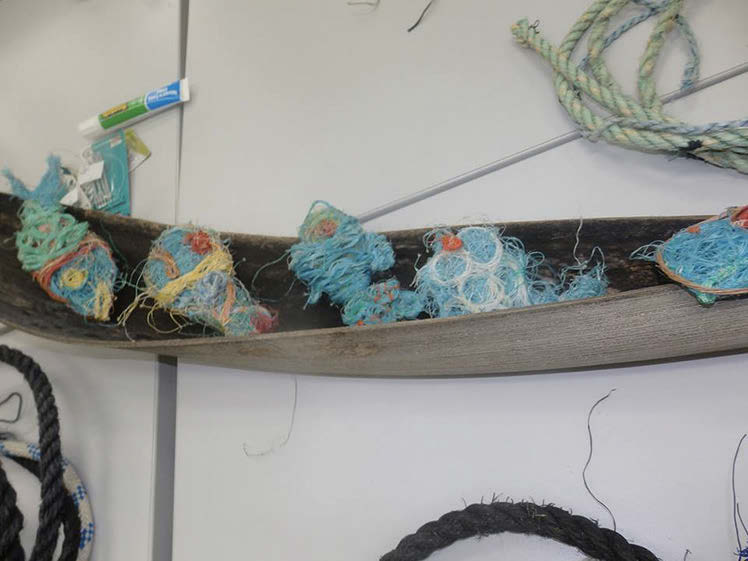
In the same vein as at the Heineken Regatta in early March 2016,
Agoa met with the organizers of the St Barth Bucket Regatta to increase their awareness about the protection of marine mammals during this nautical event, which took place this year on March 17-20. An informational sheet in English was included in the «race book» given to each crew. Olivier Raynaud, director of St Barth’s Territorial Environmental Agency, and Romain Renoux, representative of Agoa, also made a presentation during the pre-race briefing. They also went out on the committee boat during the race, and equipped with binoculars where able to make sure that no marine mammals got in the way of the large sailboats that participate in this prestigious regatta.
Better Means For Better Missions
It was in Cayenne, French Guyana, that the council of French Shores in the Americas (CRFA) met on June 16 and 17, 2016.
All of the American branches of the Conservatoire were there, as well as concerned politicians, such as senator Guillaume Arnell, who represented Saint Martin. Each branch presented its current activities in terms of real estate, management, and improvements. A five-year plan was presented for Saint Martin and Saint Barthélemy. Another important step: the creation of a management committee for the sites of the Conservatoire du Littoral in Saint Martin. This committee will meet annually and will comprise representatives of the Conservatoire and the Réserve Naturelle, of course, as well as the Collectivité, the Prefecture, and DEAL, as well as members invited from time to time according to the subjects on the agenda.
Police training in Martinique
Julien Chalifour, director of the scientific sector, and ranger Christophe Joe,
took a Nature Police training course in Schoelcher, Martinique, on June 6- 24, 2016. The ATEN, an organization for the training of managers of natural sites, financed this initial obligatory program, which is considered indispensable to acquire the technical knowledge necessary to be sworn in and given certain powers assigned to the Nature Police.
What’s new in Pinel ?
The two restaurants and the boutique on the islet of Pinel have renewed their temporary certificates of occupancy, as accorded to them by the Conservatoire du Littoral since 2007.
An audit should be undertaken by the management of the restaurants in order to report on the energy consumption needed for the operation of these two places. This audit will serve as a basis for the installation of alternative energies, more in keeping with environmental protection than the generators still in use. The good news: the public beach zone with soon be indicated with ropes, and public toilets are under construction.
Reinforcement On A Regional
After two years of working in collaboration with the 15 European islands in the Caribbean, the first portion of the BEST project is completed.
Amandine Vaslet, who coordinates the BEST program for the Caribbean along with Romain Renoux, submitted a full scientific and technical dossier to the European Union. This report includes profiles for all the ecosystems for these small slices of Europe scattered in the Caribbean Sea, as well as a list of geo-reference for the 92 key zones for regional biodiversity, as well as the 43 environmental corridors of international importance. This document has achieved its goal, which is to help Europe make the best choices concerning future investments for the protection of the Caribbean biodiversity. Amandine was highly congratulated for the quality of her work in a particularly complex region: 50% of the Overseas European Territories are located in the Caribbean Sea and are governed by France, The Netherlands, or Great Britain. This project, financed by the European Commission, was jointly run by the CAR-SPAW based in Guadeloupe, and the Réserve Naturelle de Saint-Martin.
Final projects were due by August 29.
https://portals.iucn.org/best/
http://ec.europa.eu/environment/nature/biodiversity/best/index_fr.htm.
BEST NEWSLETTER IS ON LINE. FOLLOW THE LINK :
http://ec.europa.eu/environment/nature/biodiversity/best/pdf/best_newsle...
The managers of the Protected Marine Areas (AMP) of the French Caribbean Islands met on June 16 & 17 in Saint Barthélemy for their annual roundtable. The Réserve Naturelle de Saint-Martin was among the participants, along with the Territorial Environmental Agency of Saint Barth, the national marine park of Guadeloupe, and the mission to create a national marine park in Martinique. After a tour around the table during which each of the protected areas presented their ongoing activities and shared information on their national strategies, the managers worked together in ateliers on specific themes:
- Sargassum seaweed
- Health of the coral reefs
- Management and control of human activities in the protected areas
- Environmental restoration of damaged marine sites, especially with the creation of coral nurseries
- Fishing regulations
- Creation of a European Interreg project to protect marine mammals in the Agoa Sanctuary and beyond.

